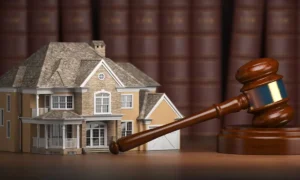When examining the creation and implementation of criminal laws in the United States, it is important to ask which level of government is primarily responsible for establishing these statutes. There is a separation of powers between federal and state authorities inherent in the American system of federalism.
What is Criminal Law?
Criminal law refers to the body of law set forth by a state or the federal government that defines offenses against society, known as crimes, along with the punishments for committing those crimes.
It establishes policies related to things like violent behavior, property crimes, public order and morals, prohibitions, and juvenile justice. The goal of criminal law is to sanction those who breach public order or cause harm to others.
The Division of Regulative Power
When it comes to establishing criminal laws in the United States, power is divided between the federal government and state governments. This reflects the principles of federalism upon which the country was founded.
Federalism refers to a system of government where power is shared between national and state/provincial/regional authorities. In the U.S., this means that both the federal government and individual state governments have legal authority to create criminal statutes.
Read also this blog: How to Become a Criminal Lawyer
Explanations for State Legislatures Creating Criminal Regulations
One of a kind Sociodemographic Variables
State populations vary widely in terms of things like socioeconomic factors, cultural values, and public safety issues. Laws tailored specifically to a state’s unique characteristics are better able to protect citizens and promote justice.
Adaptability and Responsiveness
State governments tend to be more adaptable and responsive to the needs and concerns of constituents compared to the larger federal apparatus. They can more nimbly enact or amend statutes in response to emerging issues.
Fitting Punishments to Neighborhood Settings
What constitutes an appropriate punishment can differ meaningfully depending on local community standards and circumstances. State and local control allows for sentencing proportional to the sensitivities of the population affected.
Local Area Policing and Neighborhood Cooperation
Most law enforcement in the U.S. occurs at the municipal and county level. States can help enforce the order by establishing statutes that support grassroots policing strategies and foster public cooperation with these local authorities.
Tending to Exceptional Provincial Needs
Individual states may confront problems that do not generalize to the entire nation. State legislatures ensure criminal regulations address conditions specific to their region.
Social Responsiveness and Supportive Equity
Compared to the federal government, states can be more reactive to their residents’ shifting moral viewpoints and notions of justice. This socio-cultural accountability promotes the fair treatment of all.
Ramifications of State-Driven Criminal Regulation
Different Legitimate Scenes
With state control comes diversity in approaches to tackling crime, resulting in varied legislative environments across provincial borders. This has allowed experimentation with new techniques.
Imaginative Methodologies and Strategy Trial and Error
By testing new policies, states have discovered productive and rights-affirming means of punishment that would not have emerged under a one-size-fits-all federal system. Successful pilots inspired national reforms.
Fitted Reactions to Provincial Difficulties
Localized understanding of issues like the opioid crisis enabled prompt, well-suited reactions where a centralized body may have lagged. States pioneered solutions applicable elsewhere.
Who Writes the Majority of Criminal Laws in the US?
It is state governments and legislatures that establish the vast majority of criminal laws in the United States. This devolution of power respects the principles of federalism and allows for regulation calibrated to unique local conditions and priorities.
Conclusion
With crime and justice perceptions varying regionally, state control of criminal codes has proven responsive, experimentative, and equitable. The continued local authority seems most likely to safeguard communities justly according to their standards into the future.
Frequently Asked Questions
State governments and legislatures write the overwhelming majority of criminal laws in the United States.
Federal and state governments have the authority to establish criminal statutes based on the principles of federalism, but states create far more criminal regulations.
Federalism is a system of government where power is divided between a central federal authority and regional/state/provincial governments. It allows for both national coordination and localized self-governance.
The federal government’s authority to create criminal laws is narrow as compared to the power exercised by individual state legislatures.










